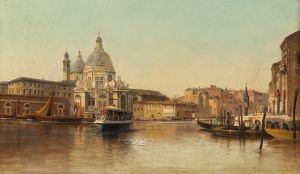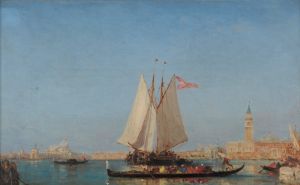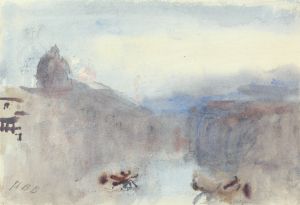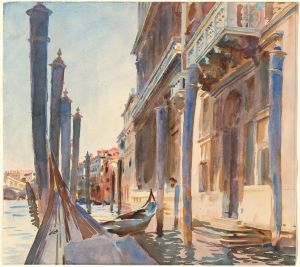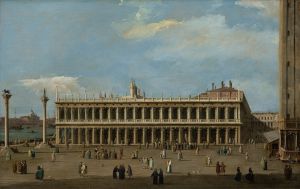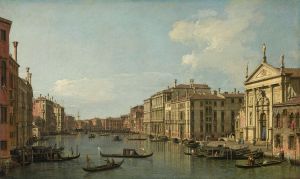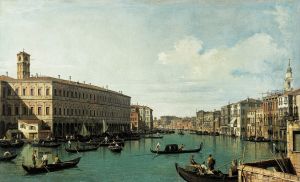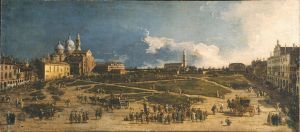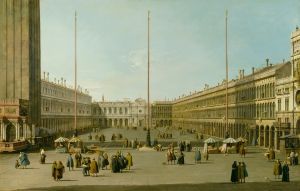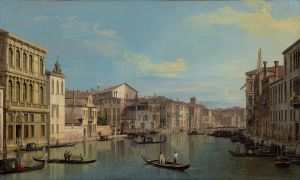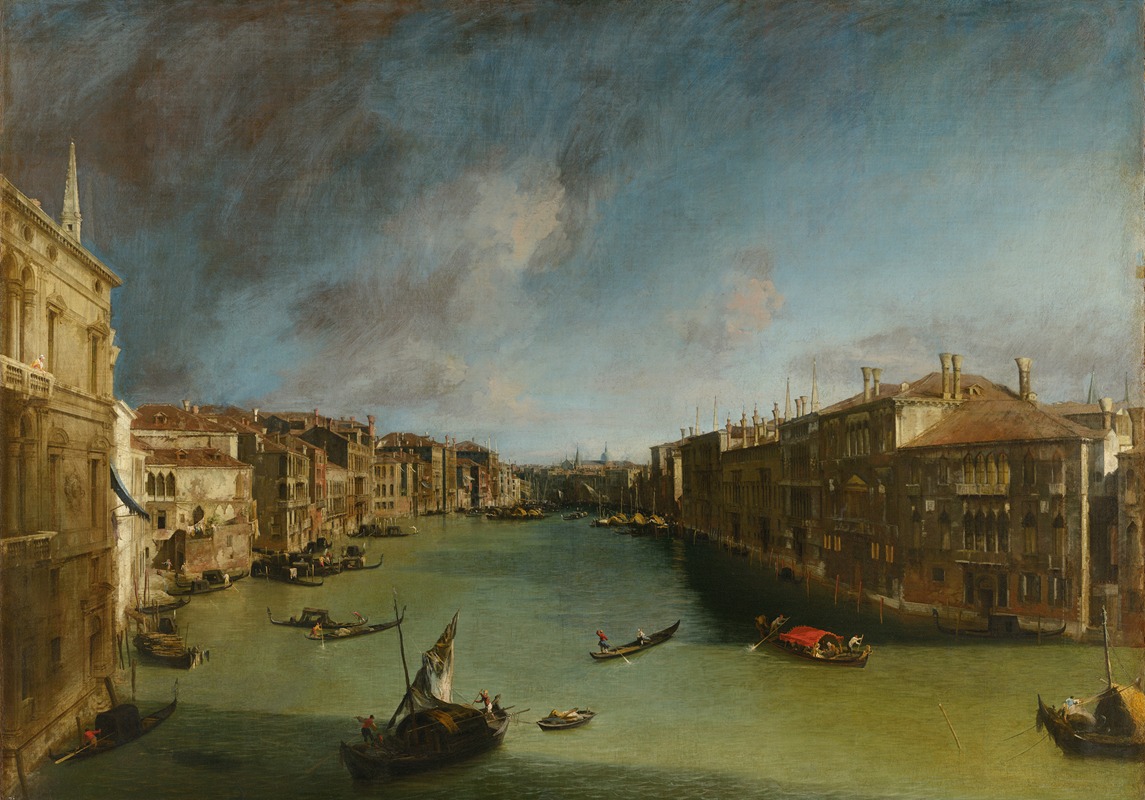
Grand Canal from Palazzo Balbi towards the Rialto
A hand-painted replica of Canaletto’s masterpiece Grand Canal from Palazzo Balbi towards the Rialto, meticulously crafted by professional artists to capture the true essence of the original. Each piece is created with museum-quality canvas and rare mineral pigments, carefully painted by experienced artists with delicate brushstrokes and rich, layered colors to perfectly recreate the texture of the original artwork. Unlike machine-printed reproductions, this hand-painted version brings the painting to life, infused with the artist’s emotions and skill in every stroke. Whether for personal collection or home decoration, it instantly elevates the artistic atmosphere of any space.
"Grand Canal from Palazzo Balbi towards the Rialto" is an oil painting by the renowned Italian artist Giovanni Antonio Canal, better known as Canaletto. Created in the early 18th century, this artwork is a quintessential example of Canaletto's mastery in capturing the grandeur and intricate details of Venice's iconic waterways and architecture.
Canaletto was born in Venice in 1697 and became one of the most celebrated painters of cityscapes, particularly those of his native city. His works are known for their precise and detailed portrayal of Venice, often characterized by a meticulous attention to architectural accuracy and the play of light on water. "Grand Canal from Palazzo Balbi towards the Rialto" is no exception, showcasing his skill in rendering the bustling life and majestic structures along Venice's most famous canal.
The painting depicts a view from the Palazzo Balbi, a historic palace situated on the Grand Canal, looking towards the Rialto Bridge, one of the most famous landmarks in Venice. The Rialto Bridge, completed in 1591, is an architectural marvel and a central feature in many of Canaletto's works. In this painting, the bridge is seen in the distance, framed by the elegant facades of the buildings lining the canal.
Canaletto's use of perspective in this painting is particularly noteworthy. He employs a vanishing point that draws the viewer's eye along the canal towards the Rialto Bridge, creating a sense of depth and movement. The composition is balanced, with the canal occupying the central portion of the canvas, flanked by the detailed and ornate buildings on either side. The water in the canal is depicted with a remarkable clarity, reflecting the sky and the structures, adding to the overall realism of the scene.
The painting also captures the lively atmosphere of the Grand Canal. Various boats, including gondolas and larger vessels, are shown navigating the waterway, with figures engaged in their daily activities. This bustling scene is a testament to the importance of the Grand Canal as a commercial and social hub in 18th-century Venice.
Canaletto's technique involves the use of a camera obscura, a device that projects an image onto a surface, which he then traced and painted over. This method allowed him to achieve a high level of accuracy in his architectural depictions. The clarity and precision of his work made his paintings highly sought after, particularly by British patrons who were fascinated by the beauty and uniqueness of Venice.
"Grand Canal from Palazzo Balbi towards the Rialto" is part of a larger body of work that Canaletto produced during his career, which includes numerous views of Venice's canals, piazzas, and landmarks. His paintings not only serve as artistic masterpieces but also as valuable historical records of Venice during the 18th century.
Today, Canaletto's works are held in major art collections around the world, including the National Gallery in London, the Metropolitan Museum of Art in New York, and the Gallerie dell'Accademia in Venice. "Grand Canal from Palazzo Balbi towards the Rialto" remains a celebrated example of his ability to capture the essence of Venice with unparalleled skill and precision.





